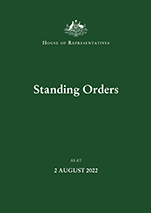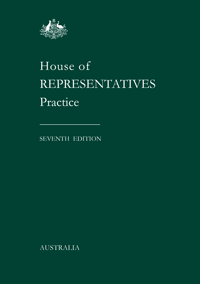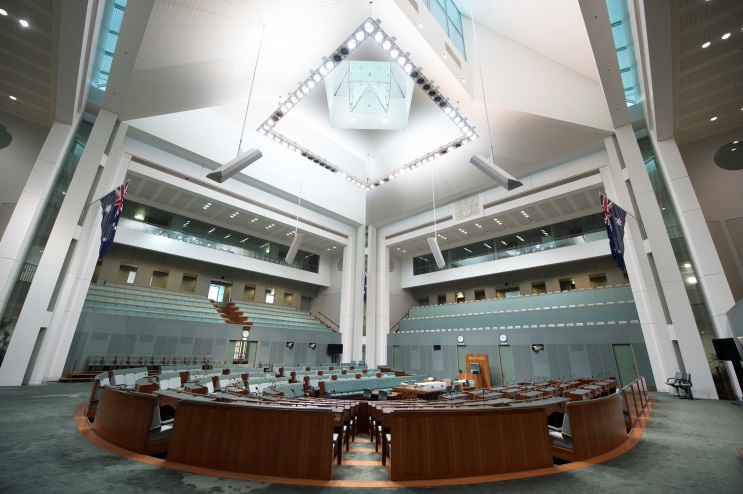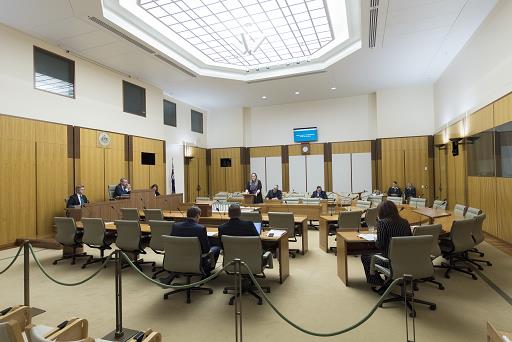Rules of the House: Standing and Sessional Orders
The House of Representatives has formal rules called the ‘Standing Orders’. These set out how business is conducted in the House. There are currently over 250 standing orders.
You may hear a Member in the Chamber raise a 'point of order' during debate when they disagree with the way something has happened in the House.
Points of order alert the Speaker that a specific standing order may have not been followed. The Speaker then considers whether or not the rules have been followed properly.
Sometimes, when the matter is complex, the Clerk at the Table will advise the Speaker on what the Standing Orders say about that matter.
You can look at the current standing and sessional orders on our website.
Rules of the House: House of Representatives Practice
Another document that sets out the rules in the House of Representatives is called ‘House of Representatives Practice’ also known as ‘Practice’.
It provides detailed information about how the Standing Orders have been applied in the past.
Having detailed historical information on procedures and practice helps the people working in Parliament to apply the Standing Orders to current practices, especially in unusual situations.
You can look at the current edition of Practice on our website.


The House of Representatives chamber
The House chamber is located on the eastern side of Parliament House (left of the visitors’ entrance). Just like the British House of Commons, it is a green colour, but our chamber is more grey-green to reflect the colour of Australian native plants and the landscape.
The seats in the House are arranged in rows and form a horseshoe shape.
There are viewing galleries surrounding the chamber. All the galleries are open to the public except for the one directly above the Speaker, which is reserved for the press.
You can learn more about the House of Representatives chamber on the Parliamentary Education Office website.

Who sits where in the House of Representatives?
Each Member has an allocated seat in the Chamber:
- The Speaker of the House sits at the end of the horseshoe.
- Government Members sit on the Speaker’s right side.
- Opposition Members sit on the Speaker’s left.
- The Prime Minister and Leader of the Opposition sit at a central table, in front of the Speaker and in front of their party members.
- Minor parties and independents sit in the curved part of the horseshoe.
You can find where your local Member sits on our website.

Image courtesy of DPS AUSPIC/Parliamentary Education Office (peo.gov.au).
What is the Federation Chamber?
The House of Representatives has a second, smaller, debating chamber called the ‘Federation Chamber’.
The Federation Chamber runs at the same time as the House, so twice as much business can be considered when they are both sitting.
You can learn more about the Federation Chamber on our website: Infosheet 16 - The Federation Chamber.
You can also see what’s happening in the Federation Chamber during sitting periods at the following link: Live Federation Chamber Minutes.

What’s the difference between the Federation Chamber and the House?
The Federation Chamber works just like the House, except for a few key differences:
- The Federation Chamber can only meet while the House is sitting.
- Divisions – formal votes – are not held in the Federation Chamber. If a division is called for, it must be held in the House.
- When a division is held, the Federation Chamber meeting is suspended so that members can go to the House and vote.
The Deputy Speaker of the House runs the Federation Chamber meetings, while the House of Representatives Chamber meetings are run by the Speaker.
Want more information?
The House of Representatives infosheets contain more in-depth information about the workings of the House and the roles of those within it. These are suitable for anyone who wants to know more about how the Parliament works.
The Parliamentary Education Office develop and maintain resources to educate Australians about, and inspire their enthusiasm for Australia’s parliamentary democracy. Check out their resources on their website.
Parliament Explained series
The next article in the Parliament Explained series will dive into some of the functions of the House of Representatives.
You can follow our series on our Facebook page and find previous articles here.